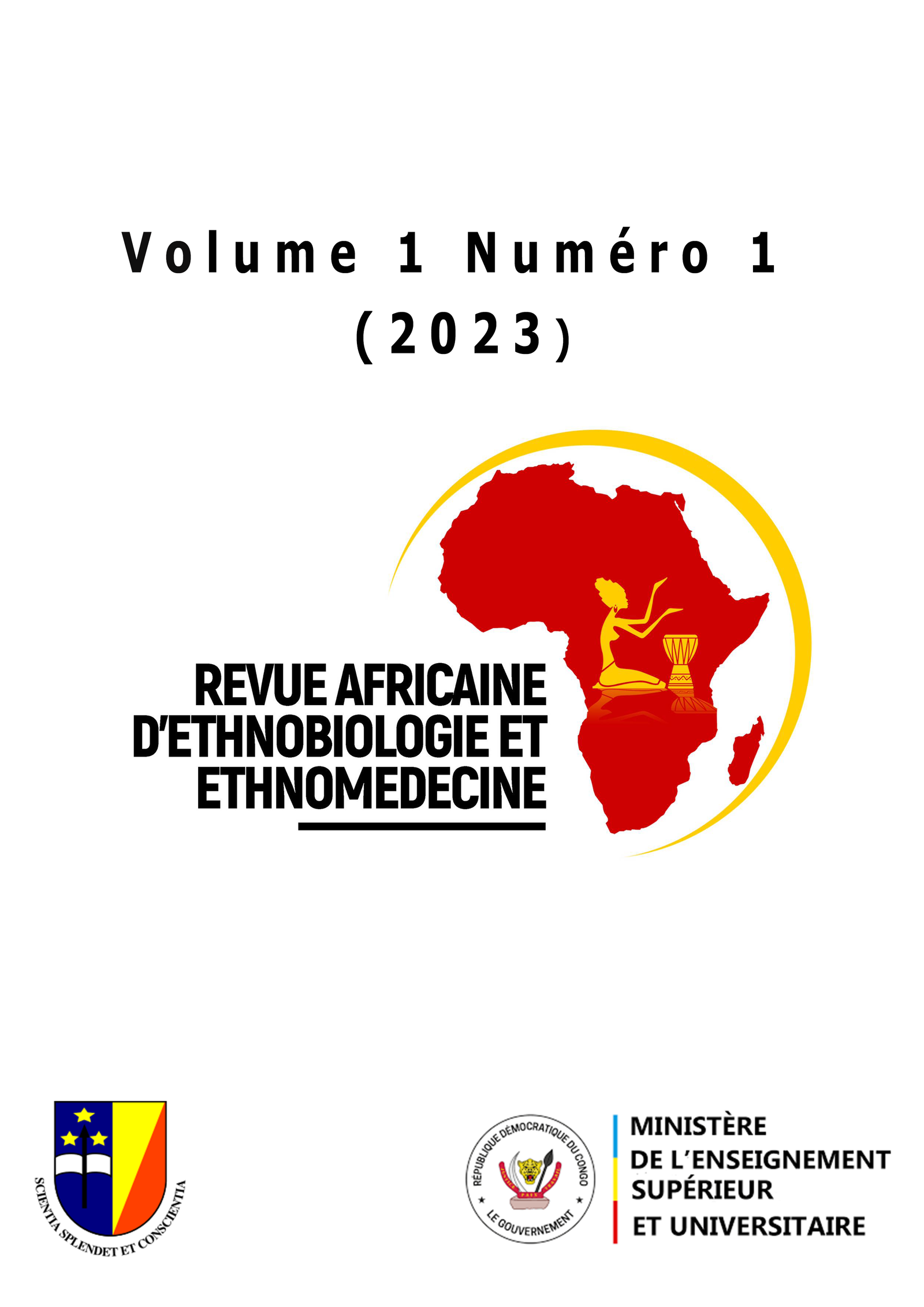Ethnobotanical survey of Garcinia kola Heckel (Clusiaceae) traditionally used in Gbado-Lite City (Nord Ubangi, Democratic Republic of Congo) as Phytomedicine
Mots-clés :
Biodiversity, Traditional pharmacopoeia, Garcinia kola, Ethnomedicine, Ubangi ecoregionRésumé
The aim of this study was to conduct an ethnobotanical survey to identify the different uses of Garcinia kola (Clusiaceae) in
Gbado Lite. The survey was carried out according to the principles of the Helsinki Declaration. In addition, the data collection
was carried out according to the stratified probability sampling method. The results obtained in this study reveal that the
majority of respondents (94%) are male, the most representative age group is between 36 50 years (71%) and the most abundant socio cultural group is the Ngbandi (44%). In addition, most of the respondents are married (88%), 68% have secondary education and 34% are unemployed. The seed is the most commonly used organ (39.7%) of G. kola , followed respectively by the stem bark (34.5%), the leaves (15.1%) and the roots (10.8%). The majority of respondents (94%) use the plant as a med i-cine. Chewing is the most common method of preparing phyt omedicines (43.5%) in the study area, followed by decoction (32.6%) and infusion (23.9%). Moreover, the therapeutic mode of administration used for all organs (100%) of this plant is or al. In addition, G. kola is used more as a stimulant (39%) and also as a medicine to treat backache (16%), malaria (9%), diabetes (9%), intestinal worms (8%), hernia (6%), and varicella (5%) and also to treat poisoning (5%) and dysmenorrhea (3%). The majority of respondents (85%) reported that G. kola is not abundant in its n atural habitat. It is therefore desirable that phyt o-chemical and pharmaco biological studies be carried out on this plant with a view to the scientific validation of its et h-nopharmacological properties, which have not yet been elucidated. It is also desira ble that this tree be integrated into the agroforestry project in order to create a productive ecosystem for a sustainable supply of raw materials. On the other hand, the planting and protection of the species and its natural habitat within the framework o f a natural carbon dioxide sequestration project would enable the beneficiaries to benefit from carbon credits.
Téléchargements
Publiée
Numéro
Rubrique
Licence
(c) Copyright REVUE AFRICAINE D'ETHNOBIOLOGIE ET ETHNOMEDECINE 2024

Ce travail est disponible sous licence Creative Commons Attribution - Pas d’Utilisation Commerciale - Partage dans les Mêmes Conditions 4.0 International.




